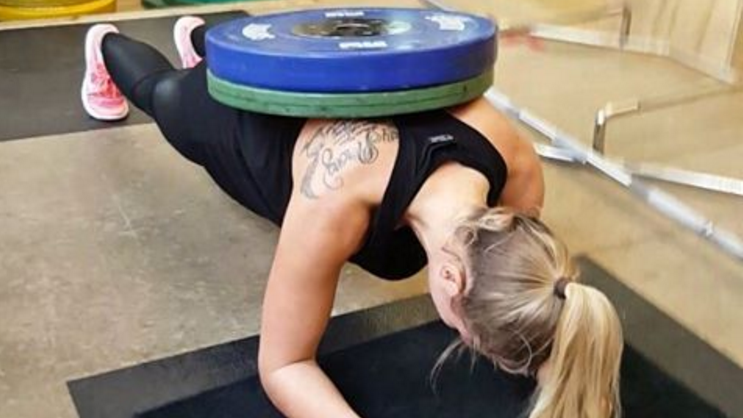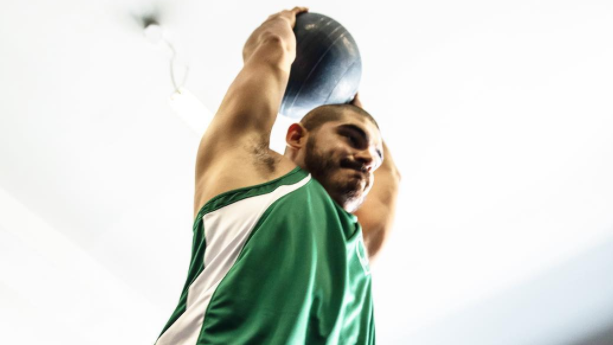The Best Ab Exercises - L Sits, Flutter Kicks, Seal Planks, and More
Chances are you have been searching for the best exercises to develop core strength, build lean muscle, and take back your fitness. After spending the past 15 years in the gym, training clients, and seeking out the best ab exercises that inspire core strength and athletic movement (for my own goals), I have come up with 15 of the best ab exercises you SHOULD be doing.
I have broken down these exercises into three (3) categories (beginner, intermediate, and advanced) to help guide you through the logical progressions from foundational exercises towards the most advanced and challenging ab exercise out there.
Skip Ahead....
***Be sure to master these in order (beginner, intermediate, and finally, advanced) to ensure proper core strength and development and reduce the likelihood of injury. You should always consult your doctor or trained professional if you have health issues and/or previous injuries (lower back, internal, etc) that may inhibit your ability to train your abdominal muscles rigorously.
[Join the free J2FIT online fitness and weightlifting community and receiving monthly training advice, coaching advice, workout ideas, and more! Subscribe today!]
Who is this for?
Everyone. Ok, but seriously, every single one of us can benefit from including the below exercises into our training routine, regardless of aesthetic goals. The below exercises can build serious core stability, strength, and help boost your performance under heavy loads and throughout your fitness endeavors.
Anyone Who Wants Abs
If your goal is to build a 2, 4, 6, 8, or 10-pack, this can help you get there. I must say however, that building a seriously lean midsection comes down to diet, and mainly diet alone.
Fitness Enthusiasts
These exercises can easily be mixed into most workout and can have a huge impact on core stability and strength. If you are someone who strength trains, runs (see below), does CrossFit, or any other form of physical fitness; try adding these into your workout program a couple days per week.
Runners
As mentioned above, adding the below exercises into your strength and core training sessions can have huge benefits for when you take to the streets/treadmill/track/trail (I think I got them all). The core muscles help to resist spinal rotation during running, which can help to prevent the pelvis from rotating and applying shearing forces on the lumbar spine and down the body into the knees/ankles. In addition, the stronger your abdominals and obliques are, the better posture and running efficiency you will have (and power).
Sports Athletes
The muscles of the core are called upon in every athletic endeavor in nearly every sport. Building a strong, functional, and powerful set of core muscles can improve your workouts in the gym, speed on the field, and can improve your explosiveness and power.
Why Are These The Best Bodyweight Ab Exercises?
While there are many great options circulating the web, I have found the below ab exercises to be the best ones for a few reasons:
All of these workouts require little to no equipment, and can be done anywhere.
All of these exercises can be scaled and/or progressed, making them accessible to all levels of abilities.
All of these exercises not only address aesthetic goals, they can target at least one other aspect of performance and/or fitness.
Flutter Kicks and Other Beginner Bodyweight Ab Exercises
Below are five (5) exercises geared for beginners and/or those looking to progress towards more complex ab/core exercises below in a safe and effective manner.
Flutter Kicks
Flutter kicks are a great movement to target the lower abdominals and core and can be done by most individuals. Start by lying on you back with your feet together and toes pointed, creating tension in your legs and glutes. Lift both legs a few inches off the floor, ensuring that you lower back does not become arched (as this places too much strain in the lumbar region). If you have difficulties with this, you can start by keeping both heels on the floor, and lifting one foot up at a time (lying single leg lift). Once you have set both heels a few inches off the floor, start to pull one of them nearly to the floor, and alternate lifting each leg up and down (without placing them back on the floor). You can do this for timed sets (30-60 seconds) or for repetitions (10-20 per leg).
Body Saw
The body saw is a slight variation on the standard forearm plank. The lifter must place their feet on either Valslides or towels, making sure to have them on a slick, smooth surface (to allow for sliding). While in the plank position, push yourself backwards a few inches so that your feet slide back yet your elbows and forearms stay in the same place on the floor. The farther you go back, the harder it will be. When ready, pull yourself forward (so that your shoulders are in line with the elbows, no further) and repeat for either timed sets (30-60 seconds) or repetition (10-20).
Feet-Elevated Crunch
The crunch is a basic abdominal exercise that is often done, incorrectly. Typically, people will place their feet on the floor (which is not incorrect) and start jerking their bodies upwards with all their might and creating some serious neck and head straining. Instead, I find that by placing the heels onto a bench or supportive surface (place knees and hips at 90 degree angles) allows you to really isolate the abdominals (and take out the hip flexors). Start by simply breathing into the stomach so that it rises and falls. Now, when ready actively pull yourself up with your abs in a slow motion, just enough that your shoulders and upper back come off the floor (lower back stays on floor). Take another deep breathe while holding this position, and feel the abdominals contract. You can do this for timed sets (30-60 seconds) or for slower, more contracted repetitions (10-20).
Hollow Holds + Hollow Rocks
Hollow holds and rocks are a foundational isometric exercise that can build a strong, stable, and athletic core. While lying on the floor (on your back), extend the legs and hands out so that you are in opposite directions (creating a fully extended body). Squeeze the legs and glute together, press the elbows straight and hand together, and pull your belly button to the floor. As you do this, you should feel your lower back pressing down into the ground and your heels, calves, arms, and shoulders raising away from the floor. This is the hollow position (be sure to keep your ears in line with the biceps). Once you are here, you can hold for 30-60 seconds and/or progress to the hollow rock.
Pallof Press
This is a corrective core exercise that can be done before training sessions or during ab circuits. This will help you learn to contract and control the abdominal more, develop better posture, and help prevent injury due to excessive lumbar (lower back) flexion/extension. This is a more complex exercise (still within a beginners reach) so I suggest you take a look at this Pallof press exercise video.
Seal Side Planks and Other Intermediate Bodyweight Ab Exercises
Below are five (5) exercises geared for individuals who may be looking for more advanced movements than the beginner exercise below, yet are not fully ready to dive into the hardest ab exercises within the last section.
V-Up
The v-up is a combination movement between a lying leg raise and a crunch, in which you are to touch your toes to your fingers (if your flexibility allows) directly above your hips. This will take not only core strength, but also a good deal of hamstring flexibility. If you have issues keeping your legs straight, you can place a slight bend in the knees. Try performing 10-20 repetitions per set of this exercise, focusing on using the abdominals and keeping constant tension in the core.
Hanging Knee Raise
Hanging from a bar can offer you some serious flexibility and mobility benefits (passive hang stretch), but it also can be a great way to target the abdominals. Start by assuming the hanging position on a pull-up bar, so that the palms face away from you and the hands are about shoulder width. Press your legs together and flex your butt, making sure that your toes are pointed towards the floor, about 12 inches in front of you (this will make the legs actually be slightly raised). As you keep your back flat, slowly pull your belly button into the body and tuck the knees to the chest (and bring the heels to the hamstrings), creating a hanging human ball of sorts. After holding for a brief movement, slowly reach your legs and toes back to the original starting point, never losing tension in the abs. Try performing 10 controlled, perfect reps per set. One more thing...I often find people do this wrong, so be sure to check out this hanging knee/leg raise exercise guide.
Seal Side Plank
The side seal plank is a movement that has you assume a side plank position (on your forearm). Once in this position, you are to lift your top leg and your top hand upwards towards the sky. This is a way to increase the complexity of the side plank and add in some oblique training at the same time. Try doing this for 10 slow and controlled repetitions per side.
Medicine Ball Slams
The medicine ball slam is a primary, explosive ab training movement that can help to build serious muscle and definition. This exercise is explosive in nature, and therefore forces the muscles of the core to contract faster and more expressively, which is what we call muscle tone (no, not the muscle toning word you see in fad workout program, but the actual scientific definition of muscle tone - the residual or continuous state of muscle tension). I find it best to throw a moderately light ball (for me, like 20-30 lbs) as hard as I can into the ground for a total of 6-10 all out effort repetitions. You can read all about ball slams in my ball slam ultimate guide.
Resistance Band / Cable Crunch
This is very effective exercise for developing stronger, and more muscular abdominals (which is necessary if you want your abs to POP). This one can be tricky, as body positioning is key and controlling the movement is a necessity (not necessarily how much weight you move). I will often mix in bands as well (instead of cables) if I do not have access to a cable stack, however the technique for the resistance band crunch is all the same. Be sure to watch this cable crunch technique video, as this weighted ab exercise is often done wrong. I find it best to perform higher repetitions (15-20) with heavier weight and controlled contractions in the crunch and a slow and controlled stretch as you come up from every rep.
L-Sits and Other Advanced Bodyweight Ab Exercises
Below are five (5) of the most challenging and rewarding core exercises you can do, most of which are done with your bodyweight. All of these movements require a firm basis of core strength and skill, much of which can be developed from the above 10 exercises.
L-Sits
I have written extensively about the l-sit in my l-sit ultimate exercise guide, detailing out why this isometric exercise can build serious core strength necessary for more advanced bodyweight core training and strength movements alike. I find it best to practice on the floor in the l-sit progression workout video. Once you have mastered the basics, you can do l-sits from a hanging position, rings, or any other stable surface. Try performing the above l-sit progression workout video twice per week for a few weeks, and then move into l-sit holds of 10-20 seconds for a few sets.
Strict Toes to Bars
Strict toes to bar are a great exercise to progress towards after you have mastered the strict knee/leg raise. By taking the toes to the bar, you really force a stronger abdominal muscle contraction and can hit a greater area of the abdominals. Try performing 10 slow and controlled strict toes to bar for 4-5 sets.
Dragonfly
The dragonfly is a serious planking movement that is found in most gymnastic programs to build core strength necessary for the Olympic rings, handstands, etc. To do this you will need to find something stable, like a beam or squat rack (you can also lie on a bench if you are starting out). In this video, the Dragonfly is demonstrated and discussed, offering you tips and troubleshooting the most common faults seen. Try to do these for slow, controlled repetitions (5-10) or tempo holds.
Weighted Planks
This weighted plank is simply a forearm plank done with weight on the back, which is great for increasing serious core strength and muscle. By adding loading onto the middle back via plate, you can really enforce core stability and bring about serious results. Try adding 45 lbs to the back and hold for 30 seconds. Once you can do this for a few sets, add more weight and build in a similar manner.
Barbell Landmine Rotations
The landmine rotation is a great exercise to develop deep “cuts” in the obliques, but also train the core with external resistance to stimulate new muscle growth. As you can see in this video, the barbell landmine rotation is done in a rotational fashion, where the power and force comes from the rotation of the pelvis. It's important to not allow the spine to bend or lean, but rather to resist any movement as the body itself rotates. Try doing 10 repetitions per side with lighter loads before building to more explosive repetitions.
Build Those Abs!
Thanks for reading and be sure to let us know what one(s) is your absolute favorite below and/or on social media!
PS, if you liked this article, AND want to politely let your friend know they recovery poorly, send this their way by sharing on Facebook, Reddit, Twitter or Instagram :)



